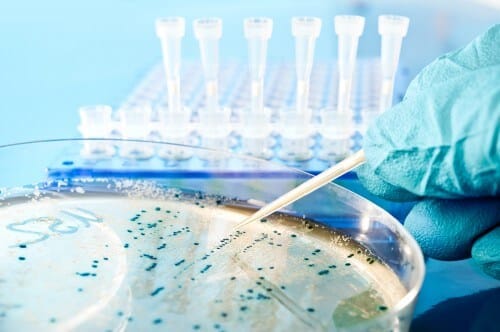Researchers from the DOE/Pacific Northwest National Laboratory have been able to simulate the way certain bacteria transmit an electric current through tiny molecular wires, revealing a secret mechanism that nature uses to move electrons.
By: Ofir Marom

Researchers from the DOE/Pacific Northwest National Laboratory have been able to simulate the way certain bacteria transmit an electric current through tiny molecular wires, revealing a secret mechanism that nature uses to move electrons. The results are a key to understanding how the bacteria cause chemical changes in the soil, and will help in the development of microbial fuel cells, batteries, or turning waste into electricity.
Some bacteria respire using metals like animals use oxygen. In the process of respiration, these bacteria "steal" electrons from carbon atoms and transfer them to metals or minerals in the soil. They do this by using molecular wires made of proteins, which transfer the internal electrons to the outside of their cell. These molecular wires are not like normal electrical wires where the electrons flow smoothly. In these wires the electrons must jump between one HEME group and another. The HEME groups are chemical compounds associated with proteins, compounds that can carry out oxidation and reduction actions, that is, receiving and giving electrons. Not all of these groups are created equally. Some hold the electrons tightly and others let the electrons slip easily. Depending on the arrangement of the HEME groups, a path is created for the passage of electrons, which can be an obstacle path, or one that electrons will easily jump over.
In recent years, more and more information about HEME groups that exist in nature has begun to accumulate. Armed with a basic understanding of the structure of the protein that makes up the molecular thread in bacteria, the researchers began to build a computer simulation of the various HEME groups along its length, with the aim of characterizing the path that the electrons should travel. What they discovered is a previously unknown mechanism.
Initially, the research team drew a model for the average position of the 10 HEME groups along the length of the protein. The interaction between each 2 adjacent HEME groups was then examined, to map the driving force for the passage of an electron at each step of the pathway. The researchers found that the driving force for the passage of electrons is not uniform along the intended path. Among some groups the driving force is high and the electrons can move quickly, while in other places it is found to be very low, which can follow the electrons in their movement. From the computer simulation it was found that in an evolutionary way the protein developed, with many HEME groups, in an arrangement where the groups that the transition between is problematic are very close to each other, almost "hugging". On the other hand, when the driving force to move is high, the groups are more distant from each other, just "shaking hands". Thanks to this arrangement, the protein creates a compensatory mechanism and thus ensures a relatively smooth flow of charges along its entire length.
In a recently published article, the researchers report that this is the first time such an evolutionary design principle for electron transfer has been found in nature. The obtained results raise new research questions such as: why are there problematic areas for charge transfer in the first place, and how does this arrangement cause the efficient functioning of a protein with multiple HEME groups? In today's reality, finding renewable energy sources is becoming an existential matter. In nature, where the concept of waste does not exist, bacteria play an important role. Studies like this, which contribute to the understanding of how bacteria produce energy from the breakdown of waste, will enable the production of energy in new ways, from sources that were not possible until now and in a more harmonious way with the environment.
